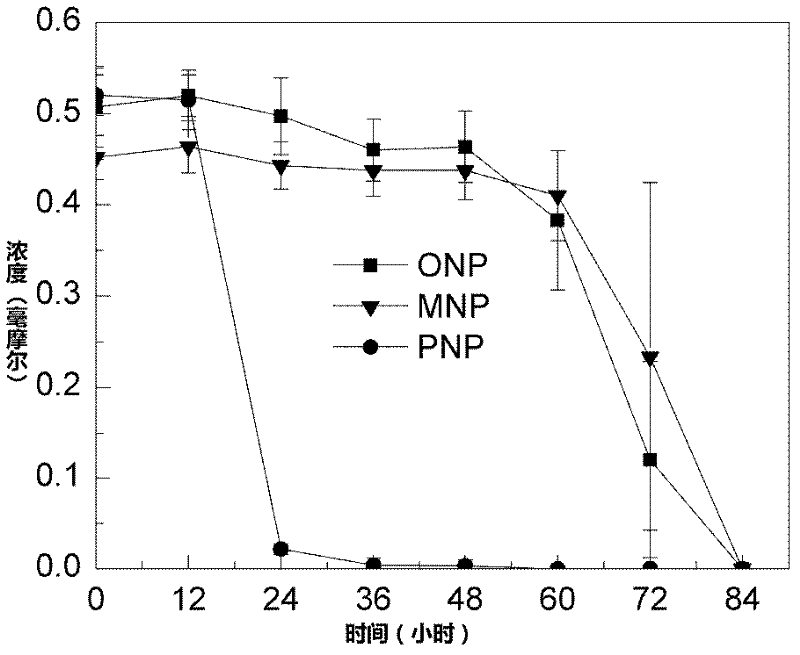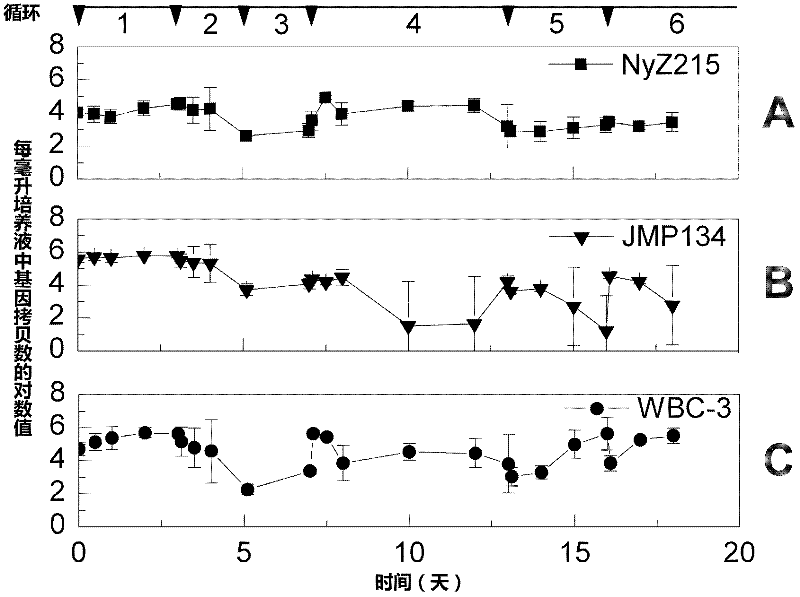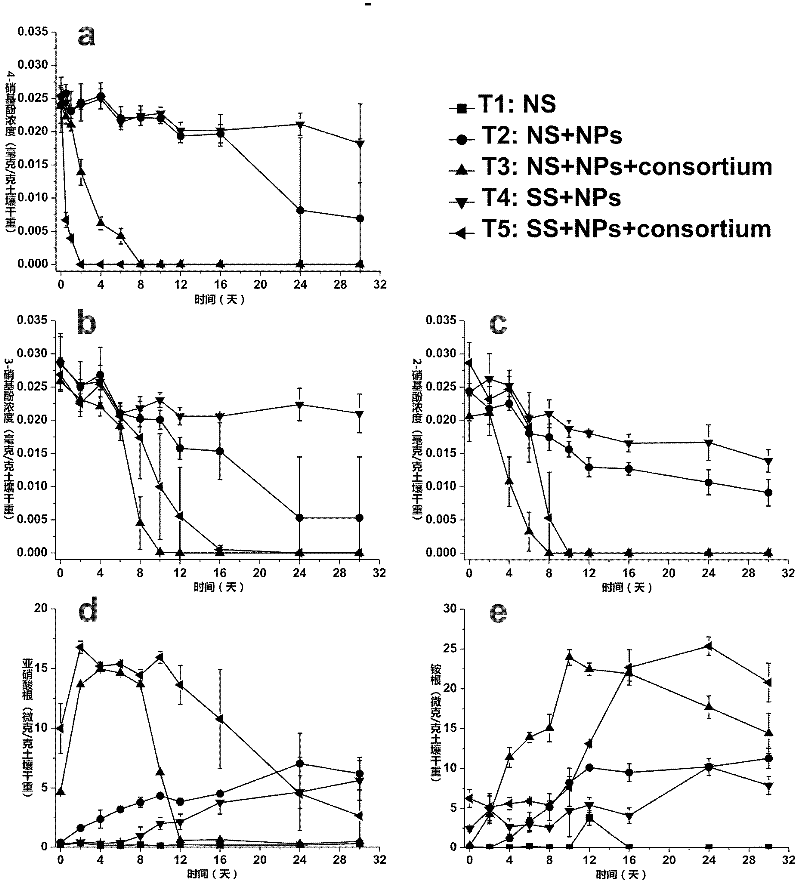In-situ microorganism restoring method for nitrophenol isomeride polluted environment and application
A technology of isomers and bioremediation, which is applied in the field of environmental organic pollutant treatment, can solve the problems of bioremediation without the three isomers of nitrophenol
- Summary
- Abstract
- Description
- Claims
- Application Information
AI Technical Summary
Problems solved by technology
Method used
Image
Examples
Embodiment 1
[0063] A method for utilizing microorganisms to carry out bioremediation of organic pollutants, the steps of which are:
[0064] A. Construction of microbial mixed flora:
[0065] Three kinds of microbial strains are cultured respectively, the preparation method of Alcaligenes sp.NyZ215 (CCTCC: preservation number M206121), Cupriavidus necator JMP134 (DSMZ: preservation number DSMZ4058), Pseudomonas sp.WBC-3 (CCTCC: preservation number M201027), comprises the following steps :
[0066] a. Preparation of inorganic salt medium: the composition is disodium hydrogen phosphate (Na 2 HPO 4 12H 2 O) 14.3g, potassium dihydrogen phosphate (KH 2 PO 4 ) 3.0g, magnesium sulfate (MnSO 4 ·H 2 O) 0.28mg, ferrous sulfate (FeSO 4 ·7H 2 O) 0.3mg, magnesium sulfate (MgSO 4 ) 0.06mg, calcium chloride (CaCl 2 ) 1mg, copper sulfate (CuSO 4 ) 0.05mg, zinc sulfate (ZnSO 4 ) 0.05mg and boric acid (H 3 BO 3 ) 0.05mg, dilute it to 1000ml with double distilled water, adjust the pH to 7.0, ...
Embodiment 2
[0083] A kind of application utilizing microbial degrading flora in nitrophenol in-situ bioremediation (environmental pollution control), its steps are:
[0084] A. Construction of microbial mixed flora:
[0085] Three kinds of microbial strains are cultured respectively, the preparation method of Alcaligenes sp.NyZ215 (CCTCC: preservation number M206121), Cupriavidus necator JMP134 (DSMZ: preservation number DSMZ4058), Pseudomonas sp.WBC-3 (CCTCC: preservation number M201027), comprises the following steps :
[0086] a. Preparation of inorganic salt medium: the composition is disodium hydrogen phosphate (Na 2 HPO 4 12H 2 O) 14.3g, potassium dihydrogen phosphate (KH 2 PO 4 ) 3.0g, magnesium sulfate (MnSO 4 ·H 2 O) 0.28mg, ferrous sulfate (FeSO 4 ·7H 2 O) 0.3mg, magnesium sulfate (MgSO 4 ) 0.06mg, calcium chloride (CaCl 2 ) 1mg, copper sulfate (CuSO 4 ) 0.05mg, zinc sulfate (ZnSO 4 ) 0.05mg and boric acid (H 3 BO 3 ) 0.05mg, dilute it to 1000ml with double distil...
PUM
 Login to View More
Login to View More Abstract
Description
Claims
Application Information
 Login to View More
Login to View More - R&D
- Intellectual Property
- Life Sciences
- Materials
- Tech Scout
- Unparalleled Data Quality
- Higher Quality Content
- 60% Fewer Hallucinations
Browse by: Latest US Patents, China's latest patents, Technical Efficacy Thesaurus, Application Domain, Technology Topic, Popular Technical Reports.
© 2025 PatSnap. All rights reserved.Legal|Privacy policy|Modern Slavery Act Transparency Statement|Sitemap|About US| Contact US: help@patsnap.com



